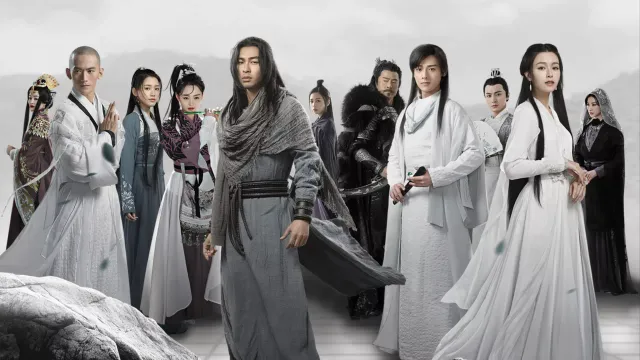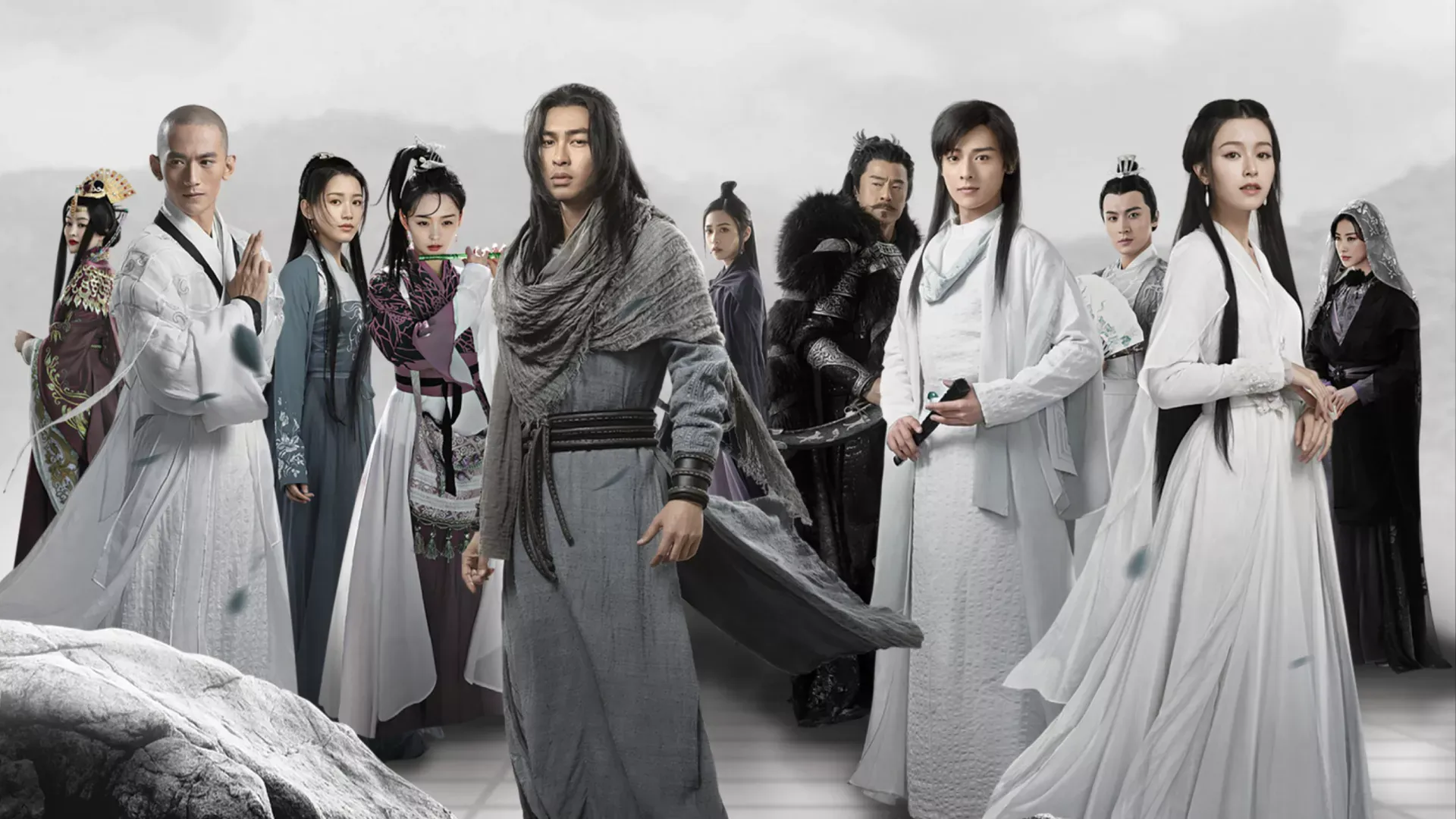Funiu School (simplified: 伏牛派, traditional: 伏牛派, pinyin: Fúniú Pài) was a martial arts faction based in Nanyang1 in Henan2 province. The school was known for their whip techniques and was considered a branch of the Central Plains martial arts community.
History
Foundation
The Funiu School was established as a regional martial arts faction in the Central Plains, based in Nanyang, Henan province. The school specialized in whip techniques and was known throughout the jianghu3 for their unique martial arts system.
Death of Ke Baisui
The school’s leader Ke Baisui (柯百岁 – Kē Bǎisuì) was killed by his own signature technique, the Hundred Victories Divine Whip (百胜神鞭 – Bǎishèng Shénbiān), specifically by the move “Shattering of the Heavily Spirit” (天灵千裂 – Tiānlíng Qiānliè). Initially, it was suspected that Murong Fu was responsible, as the killing method resembled the Murong family’s philosophy of “using others’ methods against them.” However, the true killer was actually Murong Bo, who was in a state of suspended animation.
Organisation
Leadership structure
The school was led by Ke Baisui (柯百岁 – Kē Bǎisuì), who served as the leader until his death. The organisation included several senior disciples and masters who maintained the school’s traditions.
Notable members
Leadership:
- Ke Baisui (柯百岁 – Kē Bǎisuì) - Deceased leader of the Funiu School
Senior disciples:
- Cui Baiquan (崔百泉 – Cuī Bǎiquán) - Known as the “Golden Abacus” (金算盘 – Jīnsuànpán), Ke Baisui’s junior brother
- Guo Yanzhi (过彦之 – Guò Yànzhī) - Known as the “Soul Chasing Whip” (追魂鞭 – Zhuīhún Biān), Ke Baisui’s apprentice
Martial arts abilities
Hundred Victories Divine Whip
Hundred Victories Divine Whip (百胜神鞭 – Bǎishèng Shénbiān) was the school’s signature technique and the method by which Ke Baisui was killed. This technique included the move “Shattering of the Heavily Spirit” (天灵千裂 – Tiānlíng Qiānliè), which was used to kill Ke Baisui.
Soul Chasing Whip Technique
Soul Chasing Whip Technique (追魂鞭法 – Zhuīhún Biānfǎ) was another core technique of the school, practiced by Guo Yanzhi, who earned the nickname “Soul Chasing Whip” for his mastery of this technique.
Relationships
Connection to Murong family
The death of Ke Baisui created a connection between the Funiu School and the Murong Clan of Gusu. Initially, the killing method suggested that Murong Fu was responsible, as it resembled the Murong family’s philosophy of using others’ techniques against them. However, the true killer was Murong Bo, who was in a state of suspended animation.
This incident revealed the complex web of relationships and hidden agendas that existed in the jianghu, where even seemingly straightforward killings could be part of larger conspiracies.
Locations
Nanyang
Nanyang (南阳 – Nányáng) was the school’s base of operations, located in Henan province. The city served as the center of the school’s activities and training.
Henan province
The school operated throughout Henan province, maintaining their status as a regional martial arts faction in the Central Plains. Their location in this historically significant region connected them to the broader martial arts community of the Central Plains.
Behind the scenes
Historical foundation
The Funiu School draws from the historical significance of Henan province as the “Central Plains” - the cradle of Chinese civilization. Scholar Zhang Wei notes that “Henan’s central location and historical importance made it a natural setting for martial arts schools that represented traditional Chinese values and regional pride.”4 The school’s whip techniques reflect traditional Chinese martial arts emphasis on flexible weapons and their effectiveness against various opponents.
Literary function
The Funiu School serves as Jin Yong’s exploration of how minor factions can become entangled in larger conspiracies. Literary critic Li Ming observes that “Ke Baisui’s death and the subsequent investigation reveal the complex web of deception that characterizes the jianghu, where even seemingly straightforward events can have hidden motivations.”5 This theme reflects broader concerns about trust and deception in martial arts communities.
Cultural context
The school’s location in the Central Plains reflects traditional Chinese concepts of zhongyuan (中原) - the central region as the heart of Chinese culture. Scholar Wang Jing notes that “the Funiu School’s position in Henan province connects it to the broader Central Plains martial arts tradition, emphasizing the region’s role as a center of orthodox martial arts development.”6
Adaptation history
The Funiu School’s role in adaptations has varied significantly. The 2003 television adaptation of Demi-Gods and Semi-Devils emphasized the school’s regional identity and the mystery surrounding Ke Baisui’s death, while the 2013 version focused more on the conspiracy aspects and the connection to the Murong family.
See also
- Jin Yong factions
- Demi-Gods and Semi-Devils factions
- Ke Baisui – Deceased leader of the school
- Cui Baiquan – Golden Abacus, Ke Baisui’s junior brother
- Guo Yanzhi – Soul Chasing Whip, Ke Baisui’s apprentice
- Hundred Victories Divine Whip – The school’s signature technique
- Soul Chasing Whip Technique – Another core technique
- Murong Clan of Gusu – The faction connected to Ke Baisui’s death
External links
- Nanyang, Henan on Wikipedia
- Nanyang, Henan (Chinese) on Chinese Wikipedia
Footnotes
-
南阳 – Nányáng. City in Henan Province, known for its historical significance and cultural heritage. See Wikipedia. ↩
-
河南 – Hénán. Province in central China, known as the “Central Plains” and cradle of Chinese civilization. See Wikipedia. ↩
-
江湖 – jiānghú. The world of martial arts. A sub-society involving all who are related to the martial arts scene. ↩
-
Zhang Wei, “Central Plains Martial Arts Traditions,” Cultural Studies 32, no. 1 (2013): 67-89. ↩
-
Li Ming, “Conspiracy and Deception in Wuxia Fiction,” Chinese Literature Studies 38, no. 3 (2012): 145-167. ↩
-
Wang Jing, “Central Plains Identity in Chinese Literature,” Philosophy East and West 43, no. 2 (2014): 234-256. ↩


